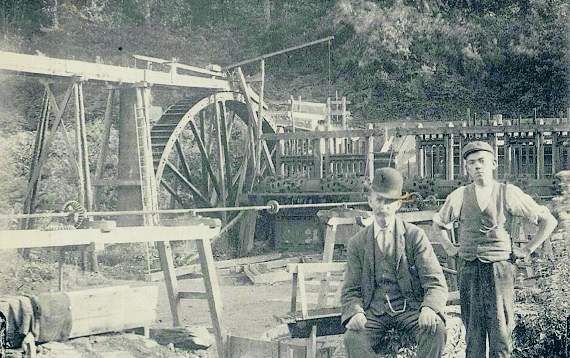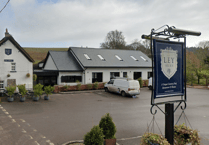AN INNOVATIVE scheme on Dartmoor to resurrect what’s thought to be the best preserved tin ‘burning house’ in Europe sparked a lukewarm response from national park planners.
But they did not extinguish the ambitious enterprise to build a nearby futuristic ‘earth house’ holiday home to fund renovation of the age-worn Grade II listed Atlas Mine on the edge of Ilsington.
Instead they opted to visit the contentious site before voting on the house project which park officers suggest should be refused, despite previously approving a revamp of the rare and historic mine.
Nichola Burley, acting as agent for applicants Gemma and Mark Roberts, told the park authority’s development management committee on Friday that she was disappointed at the failure to recommend approval of such a special venture.
‘The concerns appear to be with a lack of confidence in the legal agreement and conditions that can be applied,’ she said, adding that she hoped such matters could be resolved.
She stressed that the approved burning house overhaul could not be pursued without the upmarket earth house getting the go ahead.
‘This is a good and important opportunity for Dartmoor and its tin mining history. Please let it happen,’ she urged members.
They were told the ‘unique’ modernistic earth house would be sunk into the south-facing slope above the burning house, which Nichola Burley described as the most important surviving burning house in the UK, if not Europe.
‘It’s an exceptional building,’ the building conservation and planning consultant told the committee.
She argued that the finished development would bring the story of tin mining in Ilsington vividly back to life.
Schoolchildren, local residents, visitors to the moor together with academic and mining enthusiasts would relish the feature which would periodically be open to the public without any admission fee.
The neighbouring meadow, a ‘spectacular’ haven for bluebells and orchids, would also be revived for the improvement of the local scene.
Industrial contamination from arsenic was no longer an issue at the site – and the great horseshoe bat was not affected, she insisted.
She believed the earth house would generate sufficient rental income to pay off the cost of repairing, restoring and running the burning house.
No objections had been raised from the authority’s conservation and ecology officers – and there was added support from the Dartmoor Society, Dartmoor Tin Research Group, Ilsington Parish Council and all age groups from the local community.
Committee member David Lloyd accepted the burning house was an exceptional building with an interesting past. He felt alternative funding means might help the cause.
The industrial relic had been on the national park authority’s Buildings at Risk Register since the 1990s, members heard.
Nichola Burley said no one had come up with a solution for its repair and long-term welfare.
She reckoned legal agreements would tie earth house income to site maintenance and conservation.
‘The public get free access to the site on at least three weekends a year and on Mondays and Fridays by appointment. There is so much enthusiasm for this project,’ she said.
She added: ‘It will be such a great outdoor classroom for children. They can use the earth house as a base during visits.
‘They can learn about tin mining, local history, ecology and habitat studies and sustainable construction and ways of living.’





Comments
This article has no comments yet. Be the first to leave a comment.